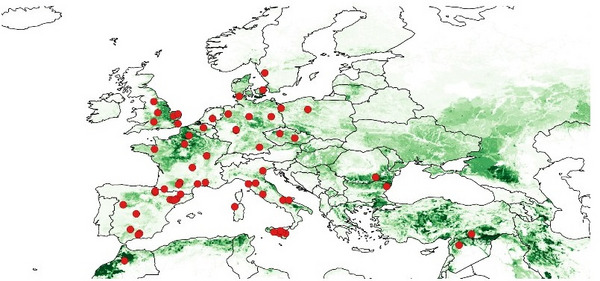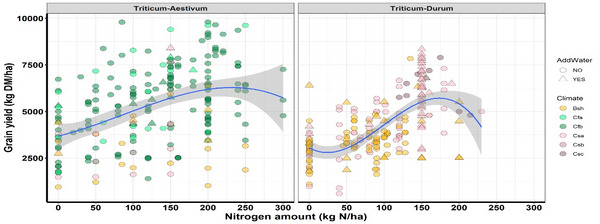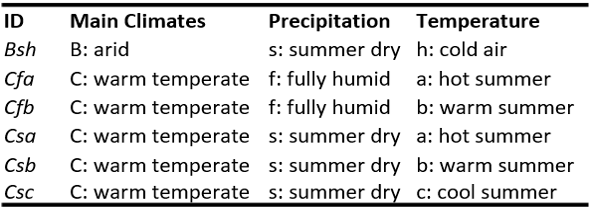The aim of mining data from past nitrogen fertiliser trials across Europe was twofold. First, to quantify the variability of nitrogen response across different climate zones, and second to use the rich dataset to create parameters for crop growth models.
The first round of data mining collected existing information on past EU-funded and national projects from the partners of the SolACE project. A total of 35 manuscripts, covering the main EU climatic zones, were selected, with grain yield and nitrogen application as the main focus.
An additional investigation was made using the Web of Science by searching for the keywords “wheat”, “nitrogen”, “water” and “stress”. A total of 100 papers were selected; however, only 45 papers had data in a readily available format. From these manuscripts, the following information was extracted: soil texture and organic carbon; planting dates; planting density; anthesis; maturity; growing season rainfall; nitrogen fertiliser and irrigation rates and timing. The location of the data is shown in Figure 1 below.
In addition, for each location, daily weather data (1981-2018) were downloaded from the NASA POWER database. At some locations, e.g. Foggia, Italy, long-term observed weather data was available, and it was used to verify the quality of the NASA POWER data.
The climatic trends (1981-2018) for Northern Europe showed a drier and warmer pattern, as opposed to Southern Europe that showed a wetter and warm pattern during the wheat-growing season. In Foggia, the observed weather data confirmed this trend, with April to June showing a slight increase in monthly rainfall. However, in Southern Europe, the main issue is the reliability of the rainfall, as the inter-annual variation can be quite large.
The nitrogen response of durum wheat (Triticum durum) and bread wheat (Triticum aestivum) differed across climatic zones, as seen in Figure 2. For example, a higher nitrogen response was observed in the Atlantic and Sub-Oceanic climate zones (Cfa, Cfb). The Mediterranean climate (Bsh) did not show any response to higher nitrogen levels. A regionally-adapted nitrogen fertiliser strategy, therefore, has the potential to increase yields and quality of wheat, while minimising nitrogen misuse and pollution of our air and water resources.
One limitation of the proposed approach is that the cultivar information was not always associated to a nitrogen response (e.g. the authors reported the mean nitrogen response across cultivars or the mean cultivar yield differences).




 tap and then scroll down to the Add to Home Screen command.
tap and then scroll down to the Add to Home Screen command.